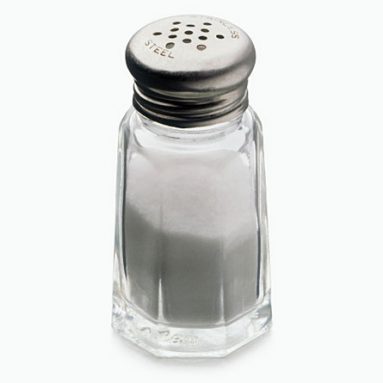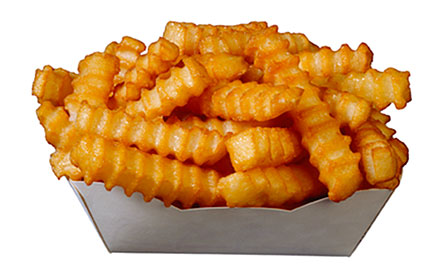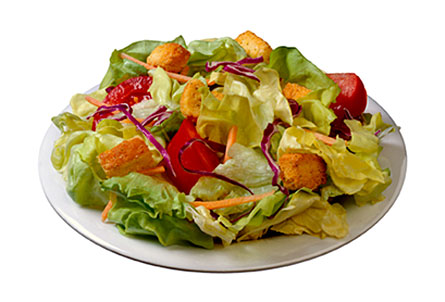Salt secrets
You probably eat a lot more salt than you realize, and that could be bad for your health
By Emily Sohn
 |
|
The salt that you sprinkle onto food is easy to measure. Unfortunately, it may be just a fraction of the total salt in your daily diet.
|
| evemilla/iStockphoto |
When you look at your food, some ingredients are easy to see. For example, there is obviously milk in your cereal, cheese on your pizza and peanut butter on your toast.
But your meals are also filled with ingredients you can’t see. And you might be surprised to learn just how much those hidden items affect your health.
Salt is a perfect example of an ingredient that you might not notice, even when you eat a lot of it.
Sometimes, salt is obvious. You can see it on pretzels. You can taste it on french fries. And you can sprinkle it on green beans, straight from the shaker.
But it’s the salt we can’t see that concerns scientists most. For decades, doctors have warned patients that too much salt can be bad for their hearts. Still, most Americans continue to eat way too much salt, even when they try to avoid the salt shaker.
That’s because more than 75 percent of the salt we eat is hidden in restaurant meals, fast food and processed foods, such as spaghetti sauce from a jar, canned soup and frozen pizza. Often, you can’t even taste that the salt is there.
Heart trouble has long been considered a grown-up problem, and parents haven’t worried too much about the salt their kids eat. But new research suggests that salt is starting to affect kids — in their hearts, kidneys and waistlines.
Loading up on salt-filled potato chips, hot dogs and canned tuna today could also set young people up for even more health problems down the road.
“Most national heads of policy-making bodies in the United States and Canada and Great Britain are reaching the same conclusion,” says Lawrence Appel, professor of medicine at the Johns Hopkins University School of Medicine in Baltimore. “Reduce your salt intake.”
Straight to the heart
Salt is made up of two elements, or basic components: sodium and chlorine. When put in food or liquid, salt, also called sodium chloride, or NaCl, breaks into its two elements.
The chlorine part of salt isn’t that important. It’s the sodium that can stir up trouble.
We need a small amount of sodium to keep our muscles working and our nerves sending messages throughout the body. But the amount of sodium we actually need is really tiny: about 500 milligrams, or less than a quarter teaspoon of salt. A little bit goes a long way.
Dietary guidelines in the United States and elsewhere recommend that healthy adults consume no more than 2,300 milligrams of sodium a day. That’s about a teaspoonful of salt.
Kids ages 9 to 13 should eat no more than 1,500 to 2,200 mg of sodium a day. Younger kids should get even less.
 |
|
Some foods just cry out for extra salt, like these fries. That can make them a bad meal choice.
|
| Burke/Triolo |
But the average American eats about twice the recommended daily amount. This worries doctors because too much sodium can cause the body to produce more blood. To pump the extra blood, the heart has to work extra hard. This leads to a rise in blood pressure — a measurement of how stressed out the heart is. High blood pressure, also known as hypertension, often leads to heart disease. Heart disease is the leading cause of death in the United States and can lead to ailments like heart attacks.
“Ninety percent of adult Americans develop hypertension in their lifetimes,” Appel says. It’s a big problem.
You are what you eat
Salt isn’t the only cause of hypertension. Eating lots of junk food, weighing too much and exercising too little also contribute to high blood pressure. But a large number of studies suggest that salt is a major player.
Some of the most powerful strikes against salt come from a pair of studies that took place in the 1990s. The goal of the research was to figure out if what we eat affects blood pressure, and if so, how much.
As part of the studies, hundreds of adults ate exactly what researchers told them to. Called DASH, these studies lasted for months at a time.
 |
|
Although most salad offerings, with the exception of olives and other pickled foods, tend to be low in salt, salad dressings can have plenty. Check out the sodium content on the label before splashing plenty on your veggies.
|
| Burke/Triolo |
The results showed a sizeable drop in blood pressure in people who ate extra fruits and vegetables, lots of whole grains, low-fat dairy products and only small amounts of red meat, sweet treats and fatty foods like fast food and donuts. Eating well, the researchers concluded, is good for your heart.
But blood pressure levels dropped even more when participants who followed the diet described above also lessened their salt intake. In the first DASH study, participants ate a relatively high level of salt — 3,300 mg a day. In the second DASH study, participants’ salt intake dropped to as low as 1,500 mg a day. The low-salt, healthy eating program became known as the DASH diet, and doctors now recommend it to both adults and kids.
“The DASH diet reduces blood pressure in the whole population,” says Eva Obarzanek, a registered dietician and research nutritionist with the National Heart, Lung, and Blood Institute in Bethesda, Md. Better yet, she says, the diet works “as much as any [blood-pressure] drug would.”
What’s more, studies from around the world show that hypertension and heart disease rates are lowest in places where people eat the least amount of salt. (In fact, the Yanomami Indians of South America eat very little sodium and have lower blood pressure readings than American 10-year-olds.)
And in a 2007 study, scientists turned up the first direct link between salt and heart disease. They found that cutting down on salt now can lower a person’s risk of heart disease 10 to 15 years in the future.
“The bottom line is that high sodium levels are definitely bad for you,” Obarzanek says. “It affects everybody. And it’s important even if you don’t have high blood pressure [now], because you’re likely to get it as you get older.”
Start thinking about salt now
Like most kids, you probably don’t spend much time worrying about heart disease. After all, hypertension tends to become more common as people reach middle age and older.
But doctors say it’s never too early to start thinking about your heart — or about salt.
Blood pressure has been going up over the past decade in children and teenagers in the United States and many European countries. And a kid with high blood pressure is more likely to become a grown-up with hypertension.
“It’s better to not have a lifelong exposure to high blood pressure,” Obarzanek says.
Cutting down on salt might help stop the cycle. In one recent study, researchers from the United Kingdom analyzed 10 trials involving nearly 1,000 kids. The trial results showed that lowering sodium intake by 40 to 50 percent led to a significant decrease in blood pressure, even in infants.
Reducing salt might also help combat childhood obesity, a growing public health problem. British researchers recently found that kids who eat less salt also drink fewer sugary soft drinks. Drinking less soda makes kids less likely to gain weight, become obese and develop high blood pressure.
And salt can affect more than just your heart and weight. A study published in October found that a growing number of kids in the U.S are suffering from an ailment called kidney stones. This painful condition used to mostly affect people in their 40s and older. Now, kids as young as 5 are getting it.
The kidneys are responsible for filtering salt out of the bloodstream. So researchers think that kids eating too much salt and not drinking enough water are partly to blame for the trend.
How to lick salt
If you’re like most people, cutting down on salt can be tough, says Gary Beauchamp, director of the Monell Chemical Senses Center in Philadelphia.
His research shows that when given larger and larger amounts of sodium, people want more and more of it. Even babies drink more formula when it’s saltier. That preference starts as early as 4 months old.
Getting used to eating less salt, on the other hand, can take months. And low-sodium food might taste gross at first when you’re used to highly salted versions.
The good news is that you can retrain your taste buds to prefer less salty food. And now is a good time to do it: Research shows that what you eat as a kid strongly influences what you’ll like as an adult. So, the more salt (or sugar, or even spices, such as hot chili powder) you eat now, the more likely you are to crave those ingredients later. And later, your heart might be weaker and less able to handle a heavy salt load.
“It’s an easy change to make at virtually no cost,” says Darwin Labarthe, director of the Division for Heart Disease and Stroke Prevention at the Centers for Disease Control and Prevention in Atlanta. “And it has an immense health impact.”
The best way to reduce the amount of sodium you consume, researchers say, is to make changes gradually. Start by sprinkling half as much salt on your dinner as you normally do. Switch to fresh foods instead of canned and bottled versions. And go easy on the condiments. Things like ketchup, soy sauce and salad dressing can carry far more sodium than you might expect.
You might also want to start reading nutrition labels. You may be surprised to find out that a serving of tomato sauce has more than 500 mg of sodium. And that there are 1,150 mg of sodium in a McDonald’s double cheeseburger, and more than 2,000 mg in many frozen meals.
“Kids today need to give salt the shake,” says David Grotto, a dietician and author in Chicago, “For overall health’s sake.”







